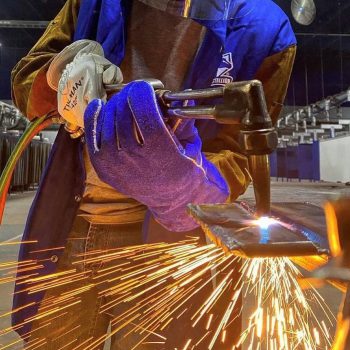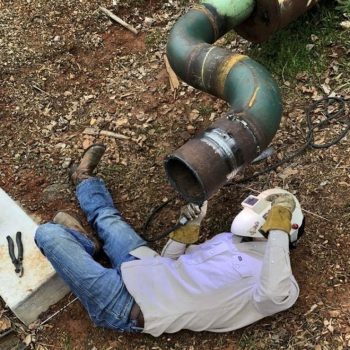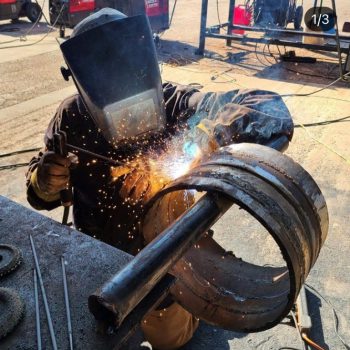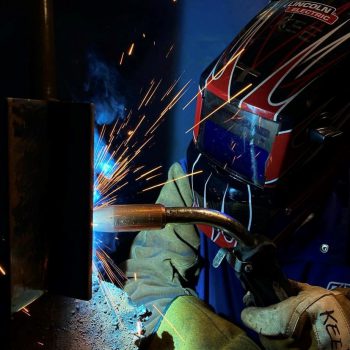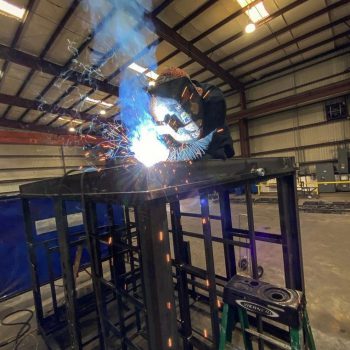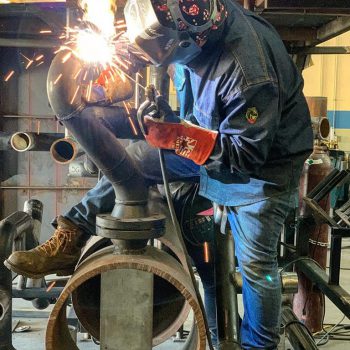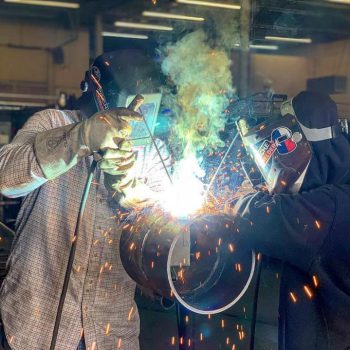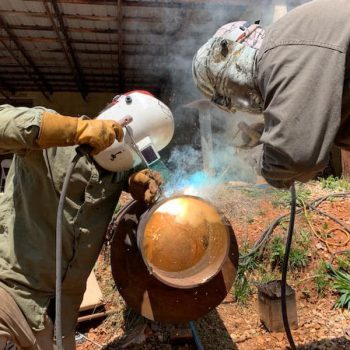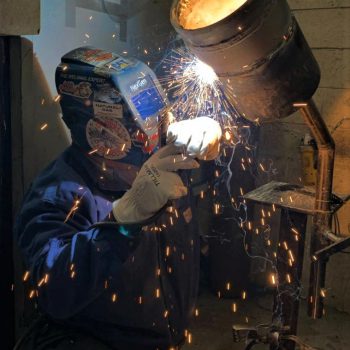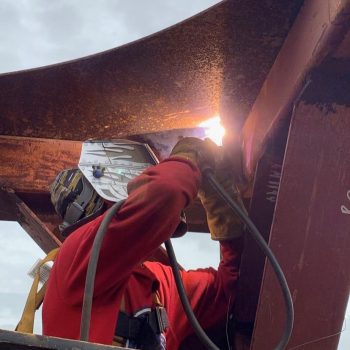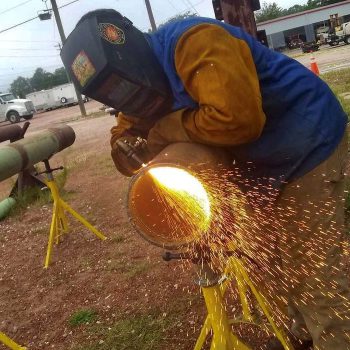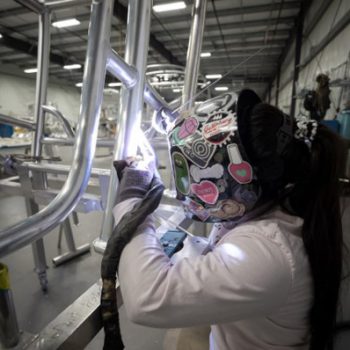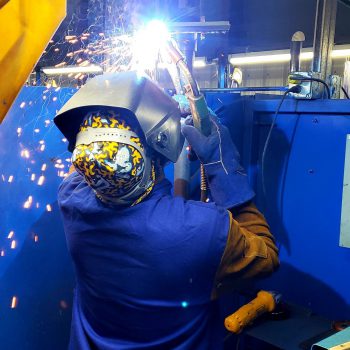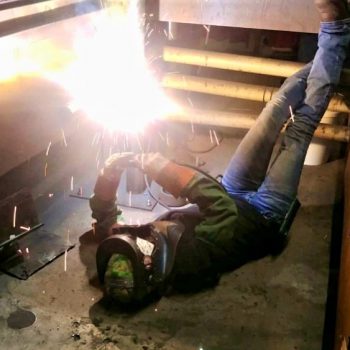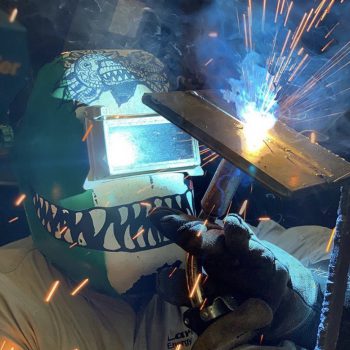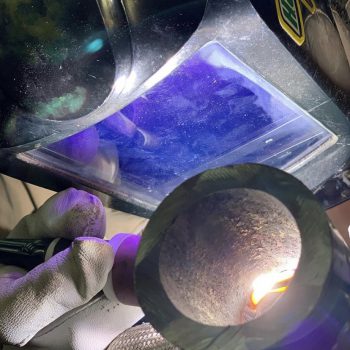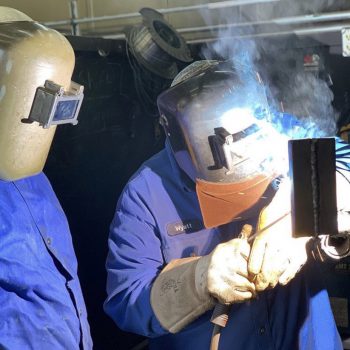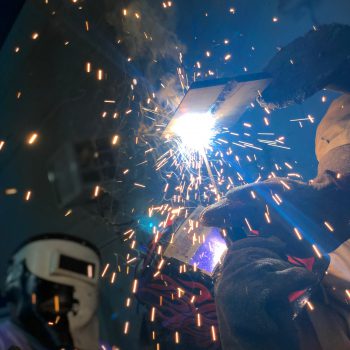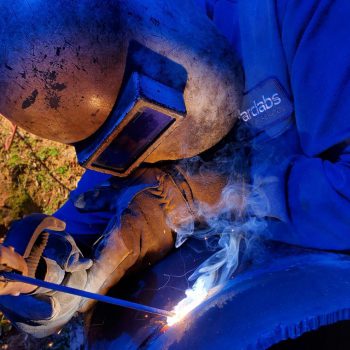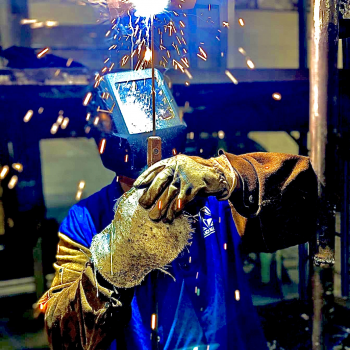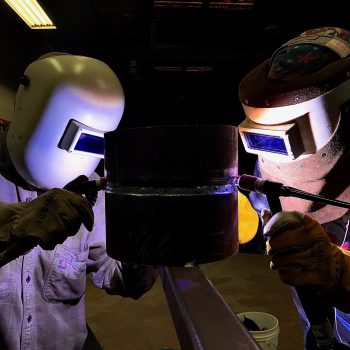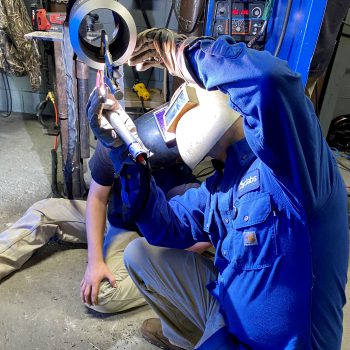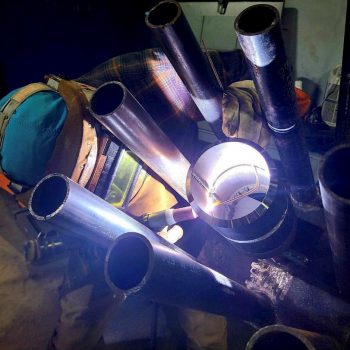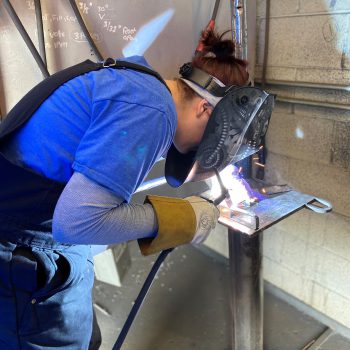In the Hot Seat with Brett Vaughn
In the Hot Seat – 10 Questions with Brett Vaughn, Arclabs Welding Instructor
Name: Brett Vaughn
Title: Welding Instructor, Arclabs Welding School
Location: Columbia Branch Campus, Columbia, SC
Years Welding: 16 years
“Welding is not a trade. Welding is a skill that you learn and there are trades that use that welding skill.”
– Brett Vaughn, Welding Instructor
1. Welding Experience Snapshot
MIG: “My first job was a fabricator with a wide variety of welding. We never knew what work we’d be welding day to day. I did a lot of MIG welding at this shop. Then I became a structural welder at a nuclear plant and I was MIG welding aluminum pipe.”
Stick: “My dad taught me to Stick weld when I was a young teen. That’s when I knew I wanted to be a welder – I just loved it. I Stick welded at my first job in the fabrication shop working on dump trucks and trailers. Then I Stick welded for 3 years at a union structural and pipe welding plant.”
TIG: “We did a lot of TIG welding at the fabrication shop working on aluminum boats, furnaces, heat exchangers and more.”
Flux cored: “I welded stainless steel flux core on chemical vats used for pig dipping for a pig plant.”
2. Your Welding Start
“At about 14, I helped out at our pastor’s house, and he gave us about 300 or more pieces of metal. My dad was a jack of all trades, and his friend was a welder. Together they showed me how to weld. They gave me a helmet, a stinger and a rod, and I just fell in love with welding. Everything went quiet, and I felt peace.”
“I took welding classes in high school at the Lexington High School Technical Center and had great instructors that taught me about each of the welding processes. After high school, I took the 400-hour program at Arclabs Welding School with my sights set on working at Hammond Metal Fabricators in West Columbia, South Carolina.”
3. Working as a Welder
“My first job was at Hammond Metal Fabricators where I started as a helper. I worked there for almost four years learning everything I could about fabrication. I had taken welding classes, but until I worked at Hammond, I didn’t know much about the fabrication process, nor did I have any other skills to work there. I guess I proved myself, because after the first 30 days, they gave me my own welding table. I made the most of my time there learning how to use all the fabrication tools, as well as improving my MIG, TIG and Stick welding skills.”
“I later moved to a nuclear plant where I was a structural welder. I went through all the safety programs and certification tests to MIG weld aluminum pipe. We went through a shutdown, so I knocked on Arclabs door and was hired to teach.”
“I taught for a year, but I didn’t feel like I had gained all the experience and met all my goals yet. So, I went back into the field, joined a union and worked as a structural welder gaining a lot more knowledge and experience as a pipe welder.
4. What Was the Coolest Job You Did?
“Working at the nuclear plant and being able to travel and see a lot of the country was a great experience. I made the most money at that job and got to see the coolest stuff – different preheat methods and welds on specialty metals. I saw some interesting projects.”
5. Why Did You Want to Teach?
“When I came through Arclabs as a student back in 2013, I didn’t feel like I learned enough. We don’t need more welders coming out of school not knowing how to do stuff. My goal was to learn everything I could in the field and then bring that to Arclabs. That way I would give students a better understanding of the full scope of the job they’ll be entering.”
6. Unique Teaching
“In my experience, I saw kids come out of welding schools unable to use a measuring tape. They literally had no idea how to measure, which is fundamental in whatever welding job you want to perform. I believe we need to teach students welding and the other skills that go along with welding and fabrication in general.”
7. What Has Changed at Arclabs Since You Were a Student?
“We’ve built pipe simulators, and the students are measuring and doing fittings with flanges and 90s and eccentric reducers (which is a fitting used between two pipes of different diameters). The students receive much more one-on-one time with our instructors, and the instructors spend a lot more time in the booths demonstrating and providing help to each student as they need it. The students today are much more prepared for a job when they walk out our doors.”
8. What is Your Teaching Strategy?
“Students learn and interpret in three different ways; visually, audibly, or hands-on. I teach in all three methods until I figure out how each student is learning. Once I figure out what method is working for a student, then I concentrate on teaching them that way for the majority of time.”
9. What’s the Most Rewarding Part of Your Career at Arclabs?
“I didn’t come up privileged, so when I see someone like me graduate and start working and earn that privilege, that’s the most rewarding thing. I love when a prior student who always came to school in ripped up jeans and boots comes back to school and wants me to come outside and look at their new truck or tools. I like staying in touch with my students. These are long friendships that started by me helping them learn some skills.”
10. How Do You Motivate Your Students?
“My students call me ‘Pops’ even though I’m not that old. I think it’s because I talk to them like my dad spoke to me. I tell them Rome wasn’t built in a day, sometimes it takes longer to get the hang of a certain process. Maybe they need to move on to something else and master that, then come back. Most times that technique works for a struggling student. But at the end of the day, there is no reason to get down on yourself. Welding is work and you have to earn it for sure, but it will click — just be patient.”
More on our instructors
[wpu_silo links=’35’]
 877-647-4111
877-647-4111
